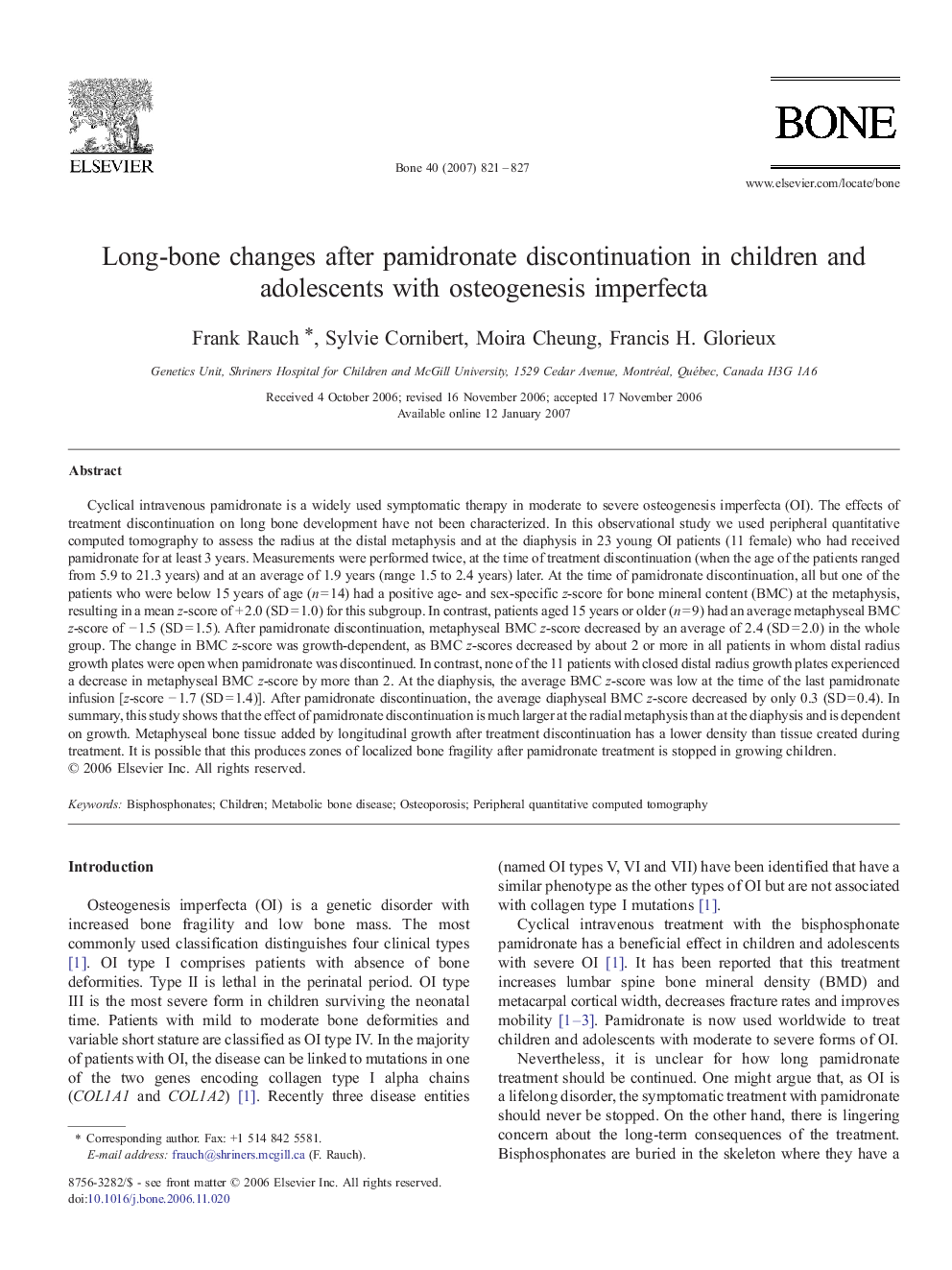| Article ID | Journal | Published Year | Pages | File Type |
|---|---|---|---|---|
| 2782119 | Bone | 2007 | 7 Pages |
Cyclical intravenous pamidronate is a widely used symptomatic therapy in moderate to severe osteogenesis imperfecta (OI). The effects of treatment discontinuation on long bone development have not been characterized. In this observational study we used peripheral quantitative computed tomography to assess the radius at the distal metaphysis and at the diaphysis in 23 young OI patients (11 female) who had received pamidronate for at least 3 years. Measurements were performed twice, at the time of treatment discontinuation (when the age of the patients ranged from 5.9 to 21.3 years) and at an average of 1.9 years (range 1.5 to 2.4 years) later. At the time of pamidronate discontinuation, all but one of the patients who were below 15 years of age (n = 14) had a positive age- and sex-specific z-score for bone mineral content (BMC) at the metaphysis, resulting in a mean z-score of + 2.0 (SD = 1.0) for this subgroup. In contrast, patients aged 15 years or older (n = 9) had an average metaphyseal BMC z-score of − 1.5 (SD = 1.5). After pamidronate discontinuation, metaphyseal BMC z-score decreased by an average of 2.4 (SD = 2.0) in the whole group. The change in BMC z-score was growth-dependent, as BMC z-scores decreased by about 2 or more in all patients in whom distal radius growth plates were open when pamidronate was discontinued. In contrast, none of the 11 patients with closed distal radius growth plates experienced a decrease in metaphyseal BMC z-score by more than 2. At the diaphysis, the average BMC z-score was low at the time of the last pamidronate infusion [z-score − 1.7 (SD = 1.4)]. After pamidronate discontinuation, the average diaphyseal BMC z-score decreased by only 0.3 (SD = 0.4). In summary, this study shows that the effect of pamidronate discontinuation is much larger at the radial metaphysis than at the diaphysis and is dependent on growth. Metaphyseal bone tissue added by longitudinal growth after treatment discontinuation has a lower density than tissue created during treatment. It is possible that this produces zones of localized bone fragility after pamidronate treatment is stopped in growing children.
